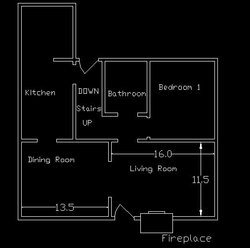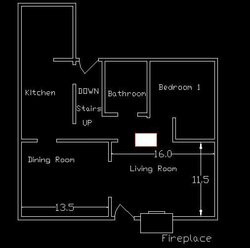Hi all! After reading tons and tons of stuff, both here and other sources. I have come to the conclusion that I want a wood burning insert for my fireplace. The trouble is... I am not sure if I am getting the right one or not... I know there are a ton of "Which stove should I buy?" threads... but I have a few honost questions that I couldn't find the answers to anywhere else.
First off... Housing specs!
I live in Mid-Michigan, so I have wintery weather from November to March'ish. Typical Lows being 10-20 during Jan and Feb, with the occasional night going below 0.
-I have a 1250sqft 1 1/2 story house built in 1924. It has no insulation in the walls, but is insulated in the attic spaces.
-The room that the fireplace is in is 12.5x16, However it is connected to another room (11x13) with a large ~7ft opening
-9 foot ceilings
-Plaster and Lathe walls (not sure if that matters)
-Ceiling fan in Dining room, Kitchen, and Bedroom.
-2 other bedrooms upstairs (from the hallway by bathroom)
I have included a quickly/crudely drawn diagram to help.
I have 2 basic concerns....
- I want an insert that is large enough to heat most of the house
- I spend a lot of time in the living room, so I do NOT want an insert that is so big, I'll be cooked out of that space
So far I am trying to decide between the Pacific Energy Super, and the Pacific Energy Vista.
Thanks for your help and insight, I appreciate it!
First off... Housing specs!
I live in Mid-Michigan, so I have wintery weather from November to March'ish. Typical Lows being 10-20 during Jan and Feb, with the occasional night going below 0.
-I have a 1250sqft 1 1/2 story house built in 1924. It has no insulation in the walls, but is insulated in the attic spaces.
-The room that the fireplace is in is 12.5x16, However it is connected to another room (11x13) with a large ~7ft opening
-9 foot ceilings
-Plaster and Lathe walls (not sure if that matters)
-Ceiling fan in Dining room, Kitchen, and Bedroom.
-2 other bedrooms upstairs (from the hallway by bathroom)
I have included a quickly/crudely drawn diagram to help.
I have 2 basic concerns....
- I want an insert that is large enough to heat most of the house
- I spend a lot of time in the living room, so I do NOT want an insert that is so big, I'll be cooked out of that space
So far I am trying to decide between the Pacific Energy Super, and the Pacific Energy Vista.
Thanks for your help and insight, I appreciate it!



